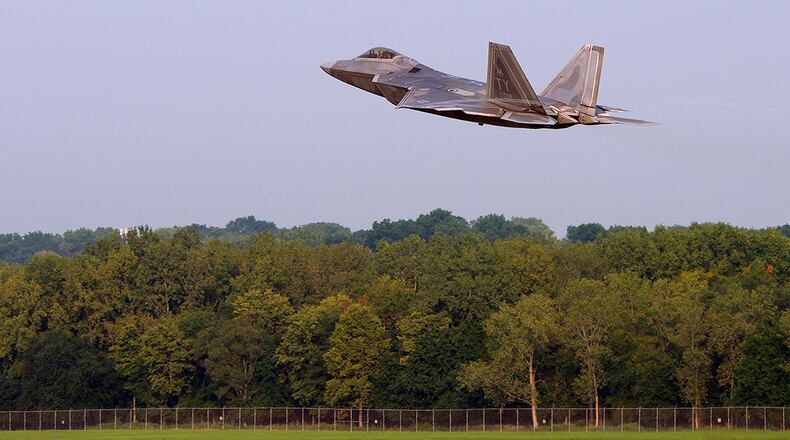After the storm track shifted over the course of days after notification, only eight F-22s ended up requiring shelter and arrived at Wright-Patt AFB Aug. 22. The aircraft are assigned to Tyndall AFB, Florida, but are currently flying out of Eglin AFB, Florida, due to damage on Tyndall’s flight line from a hurricane in October 2018.
But regardless of the number of aircraft Wright-Patt takes in, providing shelter for aircraft is no small feat and requires a great deal of logistical planning and teamwork.
“We already have a Safe Haven plan in place for these events; so we are ready to go once we get notified,” said Dave Egner, 88th Operations Support Squadron’s director of Operation. “The key players immediately get together to go over the plans and processes.”
Egner said the team looks at the requirements of the aircraft and matches it against what capabilities Wright-Patt AFB has to assist those aircraft and not knowing how the storms will develop while planning, the number or aircraft to shelter continuously fluctuates requiring the team to also be flexible.
The first step is to look at the availability of ramp space to ensure they are able to accommodate the incoming aircraft, along with the capability to take care of the pilots and maintainers during their stay.
“There are a lot of face-to-face and phone call conversations made to ensure we are ready,” said Egner. “We look at everything from ramp space, hangar space, lodging, transportation and medical care.”
“For the F-22s that were here, along with the eight pilots, there were a couple dozen maintainers that arrived ahead of time to help care for the incoming aircraft,” said Egner. “The maintainers worked with our transient alert, refueling and other flight line entities to ensure they were taken care of.”
Egner said accepting aircraft as a safe haven at Wright-Patt AFB is truly a team effort.
“Crews that have come to Wright-Patt AFB have said we are the best,” said Egner. “We have a have a plan in place and we are able to execute it so they are well taken care of, and we are able to show them what Team Wright-Patt is made of.”
About the Author


